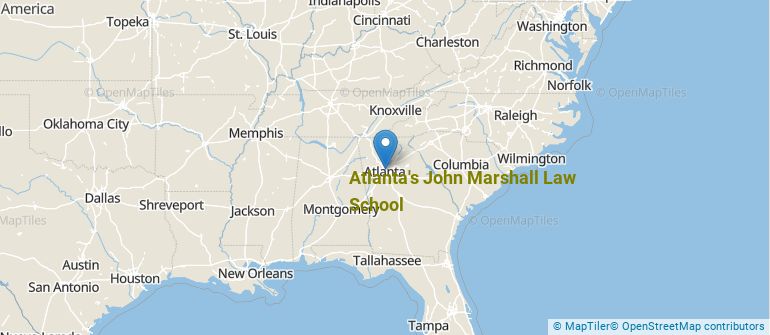 by our College Data Analytics Team
by our College Data Analytics TeamExplore the best ranked schools for the programs you are most interested in.
AJMLS was not ranked in College Factual's Best Overall Colleges report this year. This may be because not enough data was available.
See all of the rankings for Atlanta's John Marshall Law School.
Data for the student to faculty ratio for this school has not been reported.
When estimating how much access students will have to their teachers, some people like to look at what percentage of faculty members are full time. This is because part-time teachers may not have as much time to spend on campus as their full-time counterparts.
The full-time faculty percentage at Atlanta's John Marshall Law School is 100%. This is higher than the national average of 47%.
Get more details about the location of Atlanta’s John Marshall Law School.

Contact details for AJMLS are given below.
| Contact Details | |
|---|---|
| Address: | 245 Peachtree Center Ave. Ne, Suite 1900, Atlanta, GA 30303 |
| Phone: | 678-916-2600 |
| Website: | www.johnmarshall.edu/ |
| Most Popular Majors | Bachelor’s Degrees | Average Salary of Graduates |
|---|---|---|
| Law | 58 | NA |
Online courses area a great option for busy, working students as well as for those who have scheduling conflicts and want to study on their own time. As time goes by, expect to see more and more online learning options become available.
In 2022-2023, 19 students took at least one online class at Atlanta's John Marshall Law School. This is an increase from the 14 students who took online classes the previous year.
| Year | Took at Least One Online Class | Took All Classes Online |
|---|---|---|
| 2022-2023 | 19 | 0 |
| 2021-2022 | 14 | 0 |
| 2020-2021 | 299 | 299 |
| 2018-2019 | 48 | 0 |
Learn more about online learning at Atlanta’s John Marshall Law School.
Footnotes
*The racial-ethnic minorities count is calculated by taking the total number of students and subtracting white students, international students, and students whose race/ethnicity was unknown. This number is then divided by the total number of students at the school to obtain the racial-ethnic minorities percentage.
References
More about our data sources and methodologies.